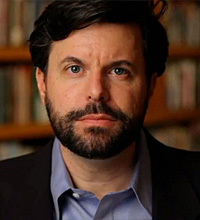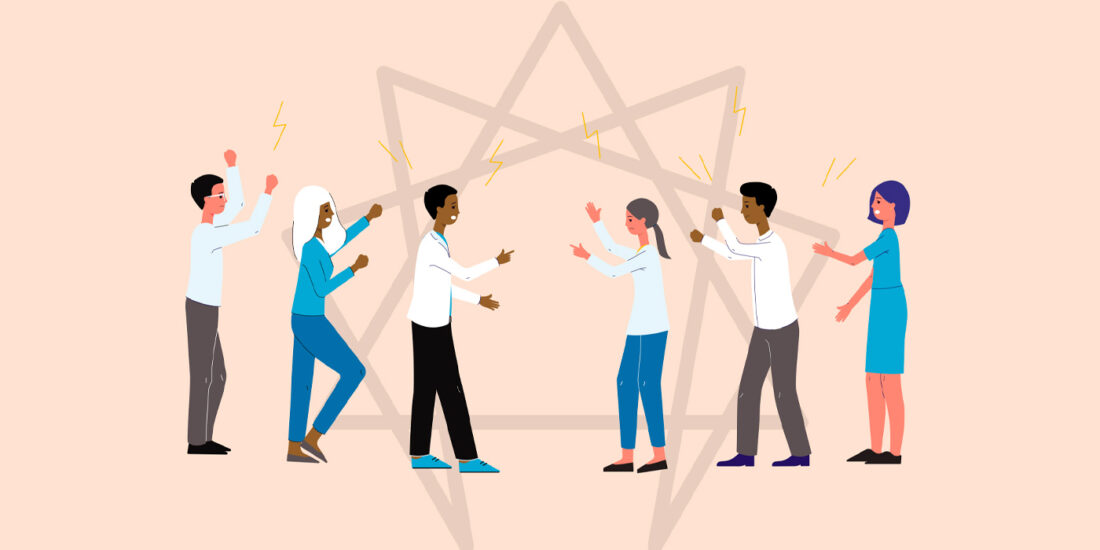An Interview with Charles Duhigg
This issue is the second in a series of three interviews with keynote presenters at the FFI global conference, October 8-11 in Washington, DC. The Practitioner’s interview with Charles Duhigg, Pulitzer Prize–winning reporter at The New York Times, and best-selling author of The Power of Habit is below.
The Practitioner: Tell us a little about the intellectual and personal influences that have shaped your interests and the trajectory of your work as a writer and thinker.
Charles Duhigg: I decided to become a journalist after spending a few years building a company in medical education in New Mexico and attending Harvard Business School. I thought that journalism would be a fascinating way to spend a life (and it has been!) A big moment occurred for me during my first real assignment, in Iraq, when I met an army major who had been analyzing videotapes of riots.
The major had recently been assigned to oversee a base near Kufa, about an hour south of Baghdad. To prepare, he had studied footage of the nearby towns shot by drone planes, and had noticed a pattern that often emerged when a crowd turned violent. Frequently, before a riot erupted, a small crowd of Iraqis would gather in a plaza or other open space and, over the course of several hours, start shouting angry slogans. Spectators would show up. Food vendors would arrive. The angry shouts would get louder. More time would pass. The major showed me one videotape of people milling around a plaza, and pointed out that most of them stuck to an area about the size of a five-foot box. They would talk to neighbors and watch the action, but not move much – except for at dusk, when they would often saunter over to the food vendors, and then walk back to their original spot.
“Now look here,” the major said. The tape was running at high speed, and the tiny people on the screen looked like hyperactive ants. Most of them were relatively still. But not everyone “Watch how far this guy moves.” He pointed to one of the dots on the screen. “Fifteen feet to the left. Eighteen feet to the right. Then up to the edge of the crowd, and back to the middle. That guy’s a troublemaker. If we were watching this live, we’d arrest him as soon as we saw that much movement.”
Indeed, as the tape rolled on, one of those energetic dots picked up a glass bottle and threw it against a wall. Another frantic dot threw a rock. Soon, the spectators were drawn in. Within 15 minutes a full-scale riot was underway. Eventually, everyone on the screen was moving all over the place.
The major had watched this tape and dozens of others before he met with Kufa’s mayor for the first time. At that meeting, the men discussed various items of business. Before leaving, the major asked the mayor for an odd favor: Could the local police keep food vendors out of the plazas?
Sure, the mayor said. No problem.
A few weeks later, a small crowd gathered near the Masjid al-Kufa, or Great Mosque of Kufa. Throughout the afternoon, it grew in size. People started chanting angry slogans. Iraqi police, sensing trouble, radioed the U.S. base and asked troops to stand by. At dusk, the crowd started getting restless. More and more people were shouting. Spectators began looking for the kebab sellers normally filling the plaza, but there were none to be found. It was dinnertime. The crowd was hungry. A handful went home to eat. Others left to find restaurants. By 8 P.M., almost everyone was gone. The riot never happened. In fact, there hadn’t been a riot since the major arrived.
I asked him how he had figured out that removing the food vendors would change peoples’ behavior.
The U.S. military, he explained to me, was one of the biggest habit-formation experiments in history. “Understanding habits is the most important thing I’ve learned in the army,” he said. “It’s changed everything about how I see the world. You want to fall asleep fast and wake up feeling good? Pay attention to your nighttime patterns and what you automatically do when you wake up. You want to make running easy? Create triggers to make it a routine.”
The major was a small man from Georgia. He was perpetually spitting either sunflower seeds or tobacco into a cup. He told me that prior to entering the military, his best career option had been repairing telephone lines, or, possibly, becoming a methamphetamine entrepreneur, a path some of his high school peers had chosen to less success. “My wife and I write out habit plans for our marriage,” he said. “This is all we talk about in command meetings. I’m telling you, if a hick like me can learn this stuff, anyone can.”
That was really the genesis of my book: the realization that something interesting was happening in understanding the science of habits, and that anyone can learn this stuff.
The Practitioner: Your book about the “power of habit” has been widely praised by reviewers. Why do you think this book has been so well received? What is it about the prospect of controlling/channeling the power of human habits that we find so engaging?
CD: I think The Power of Habit has done well for two reasons. The first is its focus on narratives. The book tells the story of how the right habits were crucial to the success of Olympic swimmer Michael Phelps, Starbucks CEO Howard Schultz, and civil-rights hero Martin Luther King, Jr. It takes readers inside Procter & Gamble, Target superstores, Rick Warren’s Saddleback Church, NFL locker rooms, and the nation’s largest hospitals. It tells stories, and those stories, I think, help people remember what they learn.
Additionally, the book contains a basic argument: The key to exercising regularly, losing weight, raising exceptional children, becoming more productive, building revolutionary companies and social movements, and achieving success is understanding how habits work. Habits aren’t destiny. They can be changed and remade – and anyone can harness this new science to transform their businesses, communities, and lives.
The Practitioner: Perhaps you could say a bit more about habit and context. What is the power of context, as it were, to shape human habits? Does changing a habit require modifying or escaping the context in which that habit emerges?
CD: The most important context in which to understand habits is realizing that every habit has three components: a cue, a routine and a reward. Within neurology, this is known as ‘the habit loop.’ And once you understand how to diagnose these three parts, you can fiddle with how a habit functions.
Take me, for instance. For years I had a habit of eating a chocolate chip cookie every afternoon. And so, one day, I made a resolution: Stop eating cookies. But to change, I needed to first figure out this habit’s cue. Cues can be a specific time of day, a particular emotional state, or other triggers. And so I began paying close attention to my environment whenever I felt a cookie urge — and pretty quickly discovered it always occurred at about 3:30 in the afternoon. Time of day was the cue.
But simply identifying a cue isn’t enough. The reason why habits are so powerful is because they deliver rewards. So to make my resolution stick, I had to identify the reward. Why was I eating a cookie every afternoon? To figure this out, I conducted experiments. One day, when the cookie urge struck, I bought a cup of coffee, to see if what I really needed was a pick-me-up. The next day, I ate an apple to see if reducing hunger was the reward I craved. On day three, I went for a walk.
What I discovered was that the real reason I went to the cafeteria was because it offered an opportunity to see friends. The reward I was craving was socialization.
Once I understood my cue, routine, and reward, the habit was easy to change. I resolved that every afternoon I would walk to a co-worker’s desk to gossip, rather than the cafeteria. I would give myself the reward I craved — socialization — but change the routine so it didn’t include a cookie.
Of course, simply selecting cues and rewards doesn’t mean that change occurs effortlessly. The key is to figure out when your willpower is likely to flag and come up with a response ahead of time. Are you likely to start munching when you’re stressed? Buy lots of fruit before in-laws arrive. Is it hard to exercise before work? Put your running shoes by your bed so you’ll see them first thing in the morning.
And so researchers have found that new habits last longest when people write them down as a formula:
WHEN I SEE THE CUE, I WILL DO A ROUTINE TO GET A REWARD.
If you have a formula like this, you’re more likely to follow through on changing your behavior. Over time, a new habit will be born. I set my plan in place over a year ago, and today, I haven’t had a cookie in months.
The Practitioner: What are you working on now?
CD: I’m currently working on a book about the science of productivity – which will hopefully be done sometime soon.
About the contributor:

 Charles Duhigg is a Pulitzer Prize–winning reporter at The New York Times. Prior to joining the staff of the Times in 2006, he was a staff writer at the Los Angeles Times. He lives in Brooklyn and is a graduate of Yale University and Harvard Business School.
Charles Duhigg is a Pulitzer Prize–winning reporter at The New York Times. Prior to joining the staff of the Times in 2006, he was a staff writer at the Los Angeles Times. He lives in Brooklyn and is a graduate of Yale University and Harvard Business School.
Duhigg’s book about the science of habit formation, titled The Power of Habit: Why We Do What We Do in Life and Business was published by Random House in 2012 and spent more than 60 weeks on The New York Times bestseller list.




